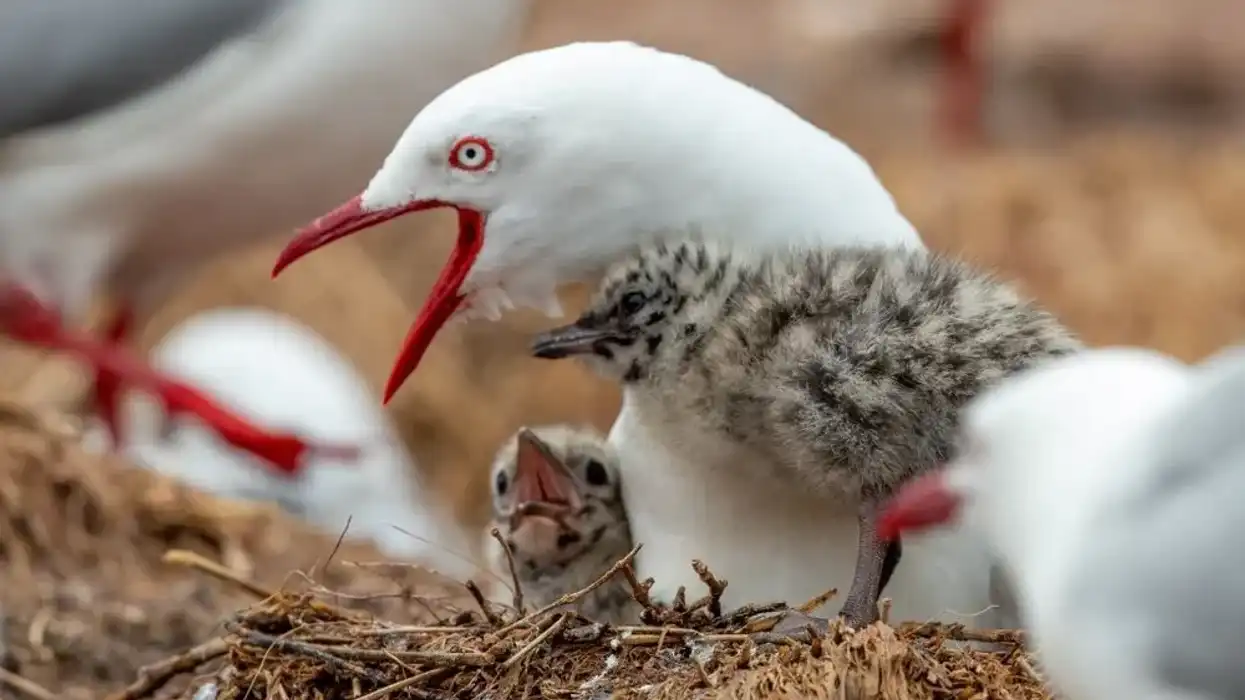Whenever you see a duck, the first thing that comes to mind would be the hilarious Daffy from 'Looney Tunes' and how they made you laugh out loud with their excellent sense of humor. Let's learn more about a beautiful brown duck species with unique colored pattern feathers. These billed ducks are the laziest and exhibit nocturnal behavior.
Yellow-billed ducks (Anas undulata) are commonly found in the Eastern and Southern parts of Africa. Based on the migratory population, these species move around the seasonal wetlands for easy availability of food.
They form huge colonies in the non-breeding season. But during the rainy season, they disperse for breeding. They cannot tolerate acidic habitats but can adapt to saltwater up to pH level 10.
The population of this billed duck (Anas undulata) is stable. However, they are vulnerable to climate change, drought, hunting by humans, and susceptible to diseases.
If you're interested in knowing more, please check out hornbill facts and American black duck facts.
Yellow-Billed Duck Interesting Facts
What type of animal is a yellow-billed duck?
Yellow-billed ducks belong to the family of geese, swans, and ducks. Predominantly found nearby freshwater habitats and wetlands. They are sedentary and nocturnal, feeding from dusk to dawn. These yellow-billed ducks are non-migratory African ducks.
What class of animal does a yellow-billed duck belong to?
The yellow-billed duck belongs to class Aves, under the family Anatidae, and the dabbling ducks' genus (Anas). They are close relatives of mallards, pintails, and teal ducks.
How many yellow-billed ducks are there in the world?
The yellow-billed duck population is stable and found in extensive ranges with ten thousand (10000) mature individuals recorded.
Where does a yellow-billed duck live?
The yellow-billed duck (Anas) lives in wetlands, swamps, sewerage ponds, marshes, still waters, and gentle water flow like ponds, streams, and lakes and they avoid fast current waters. These non-migratory birds flock together and travel short distances in search of water bodies to survive.
African yellow-billed ducks are found in southern Africa primarily, and patches can be seen in Botswana, Namibia, and Zimbabwe.
What is a yellow-billed duck's habitat?
Yellow-billed ducks prefer wetlands as there would be more scope to find small aquatic animals to feed and plant food such as roots, fruits, seeds, and water. These birds avoid highly acidic water and high concentrations of saline water. They are found in most states of Africa.
Who do yellow-billed ducks live with?
These birds move along with the same species of flock or a different sub specie of ducks, or other waterfowl. On a domestic farmhouse, they grow up with hens, cows, and other domestic animals.
How long does a yellow-billed duck live?
The average life span of yellow-billed duck range from 20-30 years.
How do they reproduce?
Yellow-billed ducks are monogamous. Males display behavior that involves fighting, acrobatic flight, vocal mating calls, preening, and synchronized swimming.
The breeding season is usually in summer, and breeding sites have dense vegetation and nearby water. Female birds build the nest on ground depressions with weeds and grass, bushes, stems, and leaves. The average clutch size can be up to 12 eggs.
The mother duck incubates eggs for 26-29 days and cares for the ducklings for six weeks until their first flight in 68 days. After that, the young ones follow their mother duck until they are independent.
What is their conservation status?
Anas undulata is listed as the Least concern by IUCN. These birds are found in large numbers, with at least 10000 mature individuals in parts of Africa. However, they are highly vulnerable to changes in climate, drought, duck hunting, Avian botulism disease, and hybridization.
Yellow-Billed Duck Fun Facts
What do yellow-billed ducks look like?

This billed duck (Anas undulata) is a brown-colored duck with a bright yellow bill. Their feathers have white scallops or scaled pattern design, plus their head is blackish grey with greyish brown plumage. The wing patch has distinctive white-bordered green speculums on the upper wings. Males and females look alike, and young juveniles are slightly dull-colored.
How cute are they?
Anas undulata may not have bright, attractive, colors but they have a unique white scallops designed pattern all over the body with brown plumage and a bright yellow bill. They have a wing patch with peculiar green speculums bordered with white. Young ones have a slightly duller color; however, they are cute adorable chicks.
How do they communicate?
These birds use the vocal mode of communication. For example, a male yellow-billed makes teal-like whistling sounds and a female billed makes quack sounds like a mallard.
How big is a yellow-billed duck?
The Anas undulata bird is 20-22 in and is 10 times bigger than the Goldfinch bird (4.7 inches).
How fast can a yellow-billed duck move?
Yellow-billed ducks are not keen on flying as they are known for their passive nature. However, they move to find wetlands to undergo molting. The exact speed of these species is not documented. But their close relative's mallard flies at a speed of 40-50 mph (64-80 kph).
How much does a yellow-billed duck weigh?
Yellow-billed Anas undulata weigh around 11-18 oz (316-520 g). Some ducks can grow up to 2.2 lb.
What are the male and female names of the species?
The male duck is commonly referred to as a drake, and the female is known as a hen.
What would you call a baby yellow-billed duck?
The baby yellow-billed waterfowl is called a duckling.
What do they eat?
Anas undulata is omnivorous and feeds on plants, food, and animals. This bird preys on small aquatic fishes, mollusks, crustaceans, insects, and insect larvae for food.
Are they poisonous?
These bird species are not poisonous, nor do they harmful to humans.
Would they make a good pet?
Yellow-billed Anas make good domestic farm animals, and rearing them is easy. In addition, these ducks are tolerant of other farm animals.
Did you know...
The yellow-billed duck has two subspecies, Northern yellow-billed duck (A. undulata rueppeli and Southern yellow-billed duck (A. undulata undulata).
In cartoon characters, we always see cute yellow ducks, and we mostly draw ducks in yellow. However, in reality, there are no adult yellow ducks. Most ducks are brown with different color patterns, and a few domestic ducks (Pekin duck) are completely white.
Few stiff-tailed ducks, such as the Lake duck (Scientific name: Oxyura australis), and the Ruddy duck (Scientific name-Oxyura jamaicensis), have bright blue bills.
Blue-billed duck species fall under nearly Endangered as these ducks are susceptible to habitat changes or destruction like cropping, clearing or burning, and duck hunting.
The American black duck (Anas rubripes) has a yellowish-green bill.
Threats to the yellow-billed duck
The yellow-billed bird is currently facing a lot of challenges to survive. They are vulnerable to diseases like avian Botulism and habitat changes caused by humans and duck hunting sports.
Are they predators?
Yellow-billed ducks (Anas undulata) prey on aquatic animals such as small fishes, crustaceans, mollusks, aquatic insects, and offspring.
Here at Kidadl, we have carefully created lots of interesting family-friendly animal facts for everyone to discover! For more relatable content, check out these secretary bird facts and tawny owl facts.
You can even occupy yourself at home by drawing one on our yellow-billed duck coloring pages.









